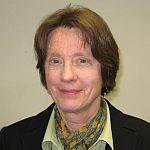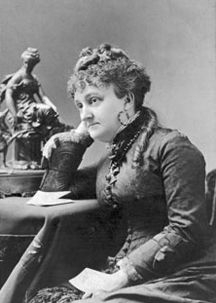 (Host) Commentator Cyndy Bittinger is a teacher, writer and historian.
(Host) Commentator Cyndy Bittinger is a teacher, writer and historian.
And as part of our Women’s History Month series on Vermont Women and
the Law, she’s been thinking about Vermont’s
woman lawyers – from Bradwell and Bigwood – to law students today.
(Bittinger)
The very first woman lawyer in the United States, Myra Colby Bradwell,
was born in Manchester, Vermont in 1831. She moved with her family to
Illinois, grew up there and married a prominent lawyer and judge. She
then studied the law in his office. And in 1869, at the age of 38, Myra
passed the Illinois bar exam with high honors and made a formal
application to practice law in Illinois. She was rejected by the
Illinois Supreme Court because she was a married woman. When she
countered this decision by citing that women should be able to make
contracts, even if married, she was again rejected since she was
still… a woman. In 1873, she appealed this decision to the United
States Supreme Court. Her lawyer argued her case under the Privileges
and Immunity Clause meaning that as a citizen she should be able to
practice her chosen profession and not be prevented or abridged by any
state.
 When Myra got to Washington, she found that her personal
When Myra got to Washington, she found that her personal
manners were outrageously aped. A colleague once said that "her speech
was falsely reported – while the idle curious followed her about the
streets of Washington as if she were some wild animal from the jungle!"
Her case was dismissed by all justices but one, Salmon P. Chase who had
been educated in Windsor, Vermont and at Dartmouth College. The majority
opinion stated that, quote, "the female sex evidently unfits it for
many of the occupations of civil life… The paramount destiny and mission
of a woman are to fulfill the noble and benign offices of wife and
mother."
When hearing of this decision, suffrage leader Susan B.
Anthony wrote Mrs. Bradwell that she was fired up to a white heat and,
quote, "Our convention will pour hot shot into that old Court."
Fortunately,
Myra Bradwell’s work as a legal journalist did not need the approval of
the Supreme Court and her newspaper, the Chicago Legal News, was a big
success, thus making her the country’s first and leading woman lawyer
practicing without a license.
 Vermont’s first woman lawyer was
Vermont’s first woman lawyer was
Jessie L. Bigwood who was admitted to the bar in 1902. She worked at a
Burlington law office, took a course at Boston University, passed her
exams and was admitted to the bar here. When she was first asked about
her new status, she replied, "Woman is being emancipated; she is no
longer harnessed to a plow nor locked within four walls, but can now be a
companion in learning and culture to her father, brothers and husband."
She had her own law office in Burlington and argued cases at the
Chittenden County Superior Court.
In 2000, women made up 49% of
law school classes, but there’s been a steady decline in female
enrollment since then. When asked why, Jessie Kornberg, a leading voice
on women and the law, offered this analysis, "the number of women in
visible leadership positions in law firms and legal departments remains
essentially unchanged."